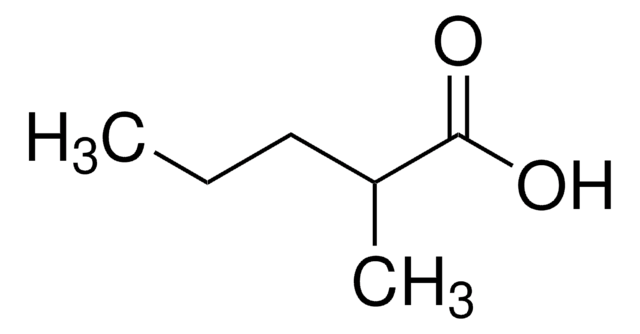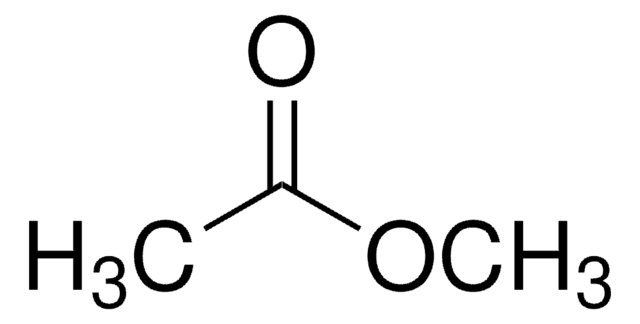W270806
Methyl hexanoate
≥99%, FG
Synonym(s):
Caproic acid methyl ester, Methyl caproate
About This Item
Recommended Products
biological source
synthetic
Quality Level
grade
FG
Fragrance grade
Halal
Agency
(EU Regulation 1223/2009)
(follows IFRA guidelines)
meets purity specifications of JECFA
reg. compliance
EU Regulation 1334/2008 & 178/2002
FDA 21 CFR 172.515
Assay
≥99%
refractive index
n20/D 1.405 (lit.)
bp
151 °C (lit.)
mp
−71 °C (lit.)
density
0.885 g/mL at 25 °C (lit.)
application(s)
flavors and fragrances
Documentation
see Safety & Documentation for available documents
food allergen
no known allergens
fragrance allergen
no known allergens
Organoleptic
fruity; ethereal; pineapple
SMILES string
CCCCCC(=O)OC
InChI
1S/C7H14O2/c1-3-4-5-6-7(8)9-2/h3-6H2,1-2H3
InChI key
NUKZAGXMHTUAFE-UHFFFAOYSA-N
Looking for similar products? Visit Product Comparison Guide
Application
- Effect of fat nature and aroma compound hydrophobicity on flavor release from complex food emulsions.: This study investigates how the nature of fat and the hydrophobicity of aroma compounds, including Methyl hexanoate, influence flavor release in complex food emulsions. The findings provide insights into the interactions between fat types and aroma compounds, which can help in the formulation of food products with optimized flavor profiles. (Relkin et al., 2004).
Signal Word
Warning
Hazard Statements
Precautionary Statements
Hazard Classifications
Flam. Liq. 3
Storage Class Code
3 - Flammable liquids
WGK
WGK 3
Flash Point(F)
99.5 °F - closed cup
Flash Point(C)
37.5 °C - closed cup
Personal Protective Equipment
Choose from one of the most recent versions:
Already Own This Product?
Find documentation for the products that you have recently purchased in the Document Library.
Customers Also Viewed
Our team of scientists has experience in all areas of research including Life Science, Material Science, Chemical Synthesis, Chromatography, Analytical and many others.
Contact Technical Service












